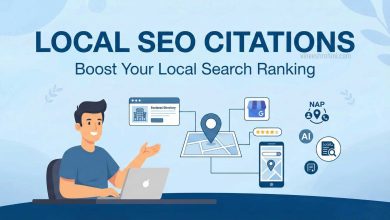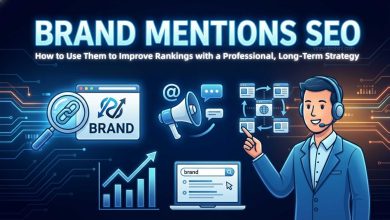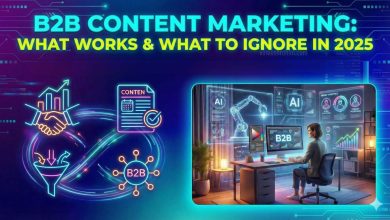Social Media Marketing Strategy for 2025: Navigating the Future of Digital Engagement : A Comprehensive Guide
Social Media Marketing Strategy: In 2025, social media marketing continues to evolve rapidly, influenced by changing consumer behavior, technological advancements, and new platform features. For businesses to stay competitive, it is essential to adapt and craft a dynamic social media strategy that leverages the latest trends and tools. This essay outlines the key components of a successful social media marketing strategy for 2025, focusing on personalization, influencer collaborations, AI-driven content, and engagement optimization.
Table of Contents
1. Embrace Hyper-Personalization in Content Strategy
Personalization has been a growing trend in marketing for years, but in 2025, it’s more critical than ever to craft highly personalized content that resonates with your target audience. With the increased use of data analytics, social media platforms now offer better ways to segment audiences based on demographics, behavior, and preferences. This allows businesses to deliver more relevant content, which ultimately drives higher engagement and conversions.
Read more: How to Use DeepSeek in Digital Marketing ? : Comprehensive Guide 2025
How to Implement Hyper-Personalization
- Audience Segmentation: Use data from social media analytics tools to segment your audience into smaller groups based on their behaviors, interests, or interactions. For instance, Insta’s and FB’s advanced targeting features allow brands to create personalized ad campaigns that reach the right people.
- Dynamic Content Creation: Leverage tools that enable real-time content customization. For example, show different products to different segments of your audience based on their browsing history or previous interactions with your brand.
- AI-Powered Personalization: Implement AI tools that analyze user behavior and create dynamic posts or ads. For example, AI can suggest the best times to post or automatically adjust ad copy to fit the preferences of individual users.
2. Leverage Influencer Marketing with a Focus on Micro and Nano-Influencers

Influencer marketing has evolved over the years, with a significant shift towards micro and nano-influencers in 2025. These influencers have smaller but highly engaged followings, making them more cost-effective and authentic choices for brands aiming to connect with niche audiences.
Benefits of Micro and Nano-Influencers
- Higher Engagement Rates: Micro-influencers often have stronger relationships with their audience, leading to better engagement rates compared to mega-influencers.
- Cost-Effective: Partnering with influencers who have fewer followers can be significantly cheaper than collaborating with celebrities or top-tier influencers, making it an attractive option for businesses with smaller budgets.
- Authenticity and Trust: Smaller influencers tend to maintain a high level of trust with their followers, and their recommendations often feel more authentic and less commercial.
Strategies for Successful Influencer Partnerships
- Identify the Right Influencers: Focus on finding influencers whose values align with your brand, and whose followers are within your target demographic.
- Collaborative Campaigns: Instead of paying for a one-time sponsored post, create long-term partnerships with influencers for ongoing collaborations, such as product reviews, giveaways, and joint content creation.
- Micro-Influencer Networks: Consider working with a network of micro-influencers who can collectively expand your reach without the hefty costs of working with a single celebrity influencer.
3. Incorporate AI-Driven Content Creation and Automation

Artificial Intelligence is revolutionizing content creation and social media marketing. In 2025, AI tools are no longer just about automating posts—they are capable of generating engaging, highly relevant content tailored to the audience’s preferences. Businesses can now rely on AI to streamline content creation, improve targeting, and enhance engagement across platforms.
How to Leverage AI in Social Media Marketing
- AI-Powered Content Creation Tools: Tools like ChatGPT for copywriting and Designhill AI for graphics allow marketers to quickly generate professional-quality content with minimal effort.
- AI-Driven Analytics: Platforms like Hootsuite and Sprout Social use AI to track engagement metrics and provide insights on the best performing content, helping marketers refine their strategies.
- Automated Content Distribution: AI tools can automate the scheduling of posts across multiple social media platforms, ensuring that content is published at the optimal time for maximum engagement.
AI also allows for predictive analytics, which can forecast the performance of content and suggest strategies that are more likely to succeed based on historical data and trends.
4. Social Commerce: The Future of Online Shopping
Social commerce—buying products directly through social media platforms—continues to grow in 2025. Platforms like Insta and FB have integrated shopping features, allowing businesses to turn their social media profiles into virtual storefronts.
How to Integrate Social Commerce into Your Strategy
- Shoppable Posts: Make use of Insta’s and FB’s shopping features to tag products in posts and stories, allowing users to purchase directly from your social media page.
- Live Shopping Events: Platforms like Insta Live now support live shopping events where users can purchase featured items in real-time. Brands can host live product launches, Q&A sessions, and product demonstrations to drive impulse buys.
- Influencer-Led Product Sales: Collaborate with influencers to host live product demos or unboxing sessions, which can drive direct sales while increasing brand visibility.
By leveraging social commerce, businesses can reduce the steps between discovery and purchase, making it easier for users to shop while engaging with the content.
Buy Now : Professional Digital Marketing Course
5. Video Content is King: Short-Form and Long-Form Strategies
Video content continues to be one of the most engaging types of content on social media. In 2025, short-form videos (like Insta Reels) remain powerful for creating brand awareness, while long-form videos (such as YouTube content) are key for building deeper connections with your audience.
Effective Video Strategies for 2025
- Short-Form Videos: These are ideal for quick, attention-grabbing content. Brands can use short-form videos for tutorials, behind-the-scenes content, memes, product teasers, and promotional offers.
- Long-Form Content: Use platforms like YouTube or IGTV to share long-form content that offers in-depth product reviews, customer testimonials, interviews with experts, or detailed tutorials.
- User-Generated Video: Encourage your customers to share their experiences via video and tag your brand. Reposting user-generated video content builds authenticity and creates social proof.
As video consumption continues to rise, businesses should prioritize a mix of short and long-form video content that can capture attention and foster stronger customer relationships.
6. Optimize Social Media Ads with Advanced Targeting and Retargeting

Social media advertising in 2025 requires a more strategic approach. With platforms offering increasingly sophisticated targeting and retargeting features, businesses can ensure their ads reach the most relevant audiences.
Best Practices for Social Media Ads
- Behavioral Targeting: Use advanced targeting options to reach users based on their online behavior, such as interests, past purchases, or interactions with your brand.
- Retargeting Ads: Set up retargeting campaigns to reach users who have visited your website or engaged with your content but haven’t converted. This helps keep your brand top of mind and encourages users to complete their purchases.
- A/B Testing: Continuously test different versions of ads (copy, images, CTA buttons) to find the most effective combination for your audience.
Advanced targeting allows businesses to ensure that their advertising budget is being spent on the most relevant potential customers, maximizing the return on investment.
Conclusion: Navigating the Future of Social Media Marketing
The social media marketing landscape in 2025 is ripe with opportunities for businesses to engage with their audiences in new and innovative ways. By focusing on hyper-personalization, influencer marketing, AI-driven content, social commerce, video strategies, and advanced advertising, brands can build meaningful connections with their customers while driving sales. Social media marketing is no longer just about posting content; it’s about creating experiences, fostering community, and leveraging the latest tools to stay ahead of the competition.
Keyword: Social Media Marketing Strategy – Social Media Marketing Strategy now – Social Media Marketing Strategy 2025



